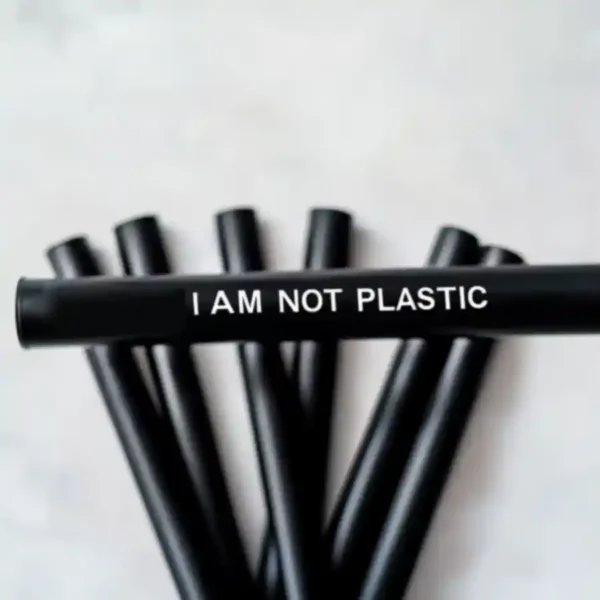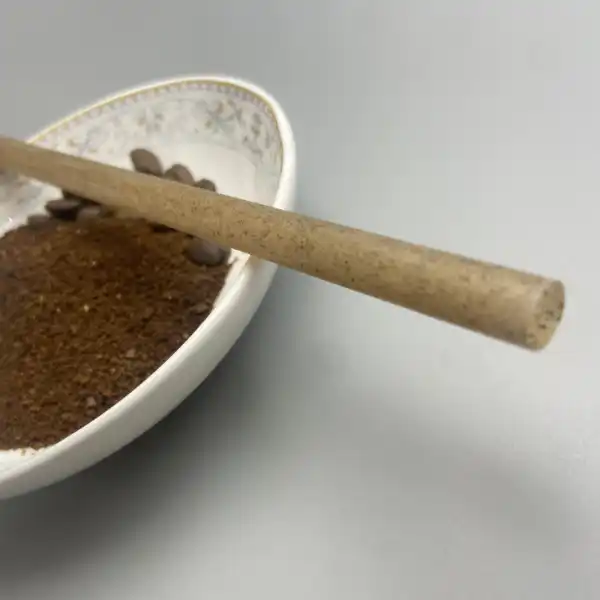Introduction
The pervasive issue of plastic pollution demands immediate and effective solutions. Single-use plastic products, particularly drinking straws, have become a significant environmental concern, contributing to the degradation of ecosystems and posing threats to wildlife. As awareness of these detrimental effects grows, so too does the need for sustainable alternatives. Biodegradable straws offer a viable solution, providing a guilt-free, eco-friendly option for consumers and businesses alike. This article will explore the diverse range of biodegradable straws available, examining their unique characteristics, advantages, and ideal applications, to facilitate informed decision-making in the pursuit of environmental responsibility.

Understanding the Need for Biodegradable Straws
- The Problem with Plastic Straws The environmental impact of conventional plastic straws is substantial. These single-use items contribute significantly to global plastic pollution, often ending up in oceans and harming marine life. Plastic does not readily decompose , instead breaking down into microplastics that contaminate ecosystems and enter the food chain. The sheer volume of plastic straw usage exacerbates this issue, with millions being discarded daily in the U.S. and billions used annually in Europe. Such statistics highlight the urgency for a shift away from traditional plastic straws.
- Why Biodegradable Straws Are a Better Choice Biodegradable straws offer a sustainable alternative to their plastic counterparts, engineered to break down naturally, thus reducing waste and minimizing environmental harm. These straws are typically made from plant-based materials, which decompose into natural substances through microbial action. Unlike plastic straws, biodegradable options reduce landfill burden, protect marine life from plastic consumption, and contribute to lower greenhouse gas emissions.
Types of Biodegradable Straws: Materials, Characteristics, and Benefits

- Overview The market now offers a diverse array of biodegradable straw options, each with unique attributes catering to varied needs. These include paper, bamboo, grass, rice, sugarcane, wheat, and coffee straws. Each type presents specific benefits, and understanding these differences is critical for making the most suitable choice.
- कागज के तिनके
Material: Paper straws are crafted from FDA-approved paper or food-grade kraft paper.
Characteristics: These straws are available in numerous colors and styles, and they offer good durability. High-quality paper straws can resist liquids for hours without becoming excessively soggy. Some are designed to withstand hot temperatures up to a point. They can also be customized with custom prints for branding purposes.
Benefits: Paper straws are biodegradable, compostable, and can often be recycled. They are an environmentally sound option that helps reduce plastic waste. They decompose relatively quickly, which reduces their ecological footprint.
Best Use Cases: Paper straws are appropriate for most beverages, particularly cold and non-acidic drinks. They are also suitable for hot drinks, provided they are designed to withstand the temperature. - बांस के तिनके
Material: Bamboo straws are made from bamboo, a rapidly renewable resource.
Characteristics: These straws are durable and reusable, and they do not conduct heat or cold. They can be used with both hot and cold beverages.
Benefits: Bamboo straws are 100% biodegradable and compostable, and they are a sustainable alternative to plastic. They are free from harmful chemicals, which makes them a safer option for consumers.
Best Use Cases: Bamboo straws are suitable for a wide variety of beverages, including hot drinks, cold drinks, smoothies, and cocktails. - Grass Straws
Material: घास के तिनके are made from 100% sedge grass.
Characteristics: These straws are durable and flexible and may have a natural tea aroma.
Benefits: Grass straws are biodegradable and compostable. They are an eco-friendly and sustainable option that is plant-based.
Best Use Cases: Grass straws are suitable for a variety of drinks and may provide a refreshing tea aroma when used with tea. - Rice Straws
Material: Rice straws are crafted from rice and tapioca starch.
Characteristics: These straws are compostable and biodegrade rapidly, and they are sometimes edible. They can be produced in a variety of pastel colors.
Benefits: Rice straws do not release harmful substances, and they can be consumed as a snack after use. They are practical and visually appealing for many applications.
Best Use Cases: Rice straws are suitable for a variety of drinks, especially for parties and events. - गन्ने के तिनके
Material: Sugarcane straws are made from sugarcane fiber.
Characteristics: These straws are durable and can be used for over 12 hours without becoming soggy. They do not have a sugary taste.
Benefits: Sugarcane straws are biodegradable and compostable and are derived from renewable resources. They offer high performance along with environmental responsibility.
Best Use Cases: Sugarcane straws are suitable for many different beverages, especially those that require longer periods of sipping. - गेहूं के भूसे
Material: Wheat straws are made from the stems of wheat plants.
Characteristics: These straws are gluten-free and allergen-friendly.
Benefits: Wheat straws are 100% biodegradable and compostable, and they are a plant-based alternative.
Best Use Cases: Wheat straws are appropriate for a wide range of beverages, offering a natural, plant-based option. - Coffee Straws
Material: Coffee straws are made from coffee grounds.
Characteristics: These straws are durable and reusable, and they may impart a slight coffee aroma and taste.
Benefits: Coffee straws are biodegradable and compostable.
Best Use Cases: Coffee straws are suitable for many different beverages, particularly coffee.
Comparative Analysis of Biodegradable Straws

The following table provides a comparative analysis of the key features of each type of biodegradable straw:
| Feature | Paper | Bamboo | Grass | Rice | Sugarcane | Wheat | Coffee |
|---|---|---|---|---|---|---|---|
| Material | Food-Grade Paper | Bamboo | Sedge Grass | Rice & Tapioca Starch | Sugarcane Fiber | Wheat Stems | Coffee Grounds |
| biodegradability | Yes | Yes | Yes | Yes | Yes | Yes | Yes |
| Durability | Moderate | High | Moderate | Moderate | High | Moderate | Moderate |
| Reusability | Limited | High | Limited | Limited | Limited | Limited | Moderate |
| Taste/Aroma | None | None | Natural Tea Aroma | None | None | None | Slight Coffee Aroma |
| Best Use Cases | Most Beverages | Hot & Cold Drinks | Various Beverages | Parties & इवेंट्स | Long-Sipping Drinks | Various Beverages | Variety of Beverages |
| Cost | Low | Moderate | Moderate | Low | Moderate | Moderate | Moderate |
| पर्यावरणीय प्रभाव | Low | Low | Low | Low | Low | Low | Low |
When selecting a straw type, consider the specific application, cost, brand image, customer preferences, and sustainability goals.
Benefits of Switching to Biodegradable Straws
- Environmental Benefits Transitioning to biodegradable straws offers numerous environmental advantages. It reduces the volume of plastic waste, mitigating the harmful effects of microplastics. Additionally, these straws contribute to the preservation of marine ecosystems and wildlife by minimizing the risk of plastic consumption and entanglement. Moreover, opting for plant-based materials can lead to lower greenhouse gas emissions, promoting a more sustainable, circular economy.
- Health and Safety Biodegradable straws prioritize consumer health by reducing exposure to harmful chemicals, such as BPA, which are often found in plastic alternatives. These straws are composed of safe, natural materials, making them a hygienic option for consuming beverages.
- Business Benefits For businesses, the adoption of biodegradable straws offers a unique opportunity to enhance their brand image and reputation. It demonstrates a commitment to sustainability, which can attract environmentally conscious customers, potentially increasing sales and customer loyalty. Furthermore, this transition can ensure compliance with environmental regulations and contribute to long-term cost savings by decreasing waste management expenses
How to Choose the Right Biodegradable Straws

- Factors to Consider Selecting the most appropriate biodegradable straw requires careful consideration of various factors, including the type of drinks served (hot, cold, or smoothies), customer preferences, and budgetary constraints. It is also essential to evaluate the sustainability certifications, ethical sourcing, and the supplier’s reliability and quality.
- Sourcing Tips Businesses should seek to purchase biodegradable straws in bulk to reduce costs, partnering with suppliers that prioritize sustainable and ethical practices. Developing strong supplier relationships is vital for ensuring consistent product quality and reliable delivery.
- Additional Tips
- Consider the size and style of straw appropriate for the beverages your business serves, offering both straight and bendable straws.
- Check for durability, as this can vary based on the paper quality in paper straws.
- Consider the custom branding options that are available to you to help promote your business.
निष्कर्ष
The transition to biodegradable straws is an essential step toward a more sustainable future. By making informed choices about straw consumption, both businesses and individuals can actively contribute to the reduction of plastic pollution and the protection of our planet. This guide provides a foundation for understanding the different types of biodegradable straws available, and it is hoped it will encourage both businesses and consumers to explore these sustainable options.
Keywords: biodegradable straws, paper straws, bamboo straws, grass straws, rice straws, sugarcane straws, wheat straws, coffee straws, eco-friendly options, sustainable materials, compostable straws, plant-based straws, reduce plastic waste, sustainable business practices.







